Nudibranch
Nudibranchia
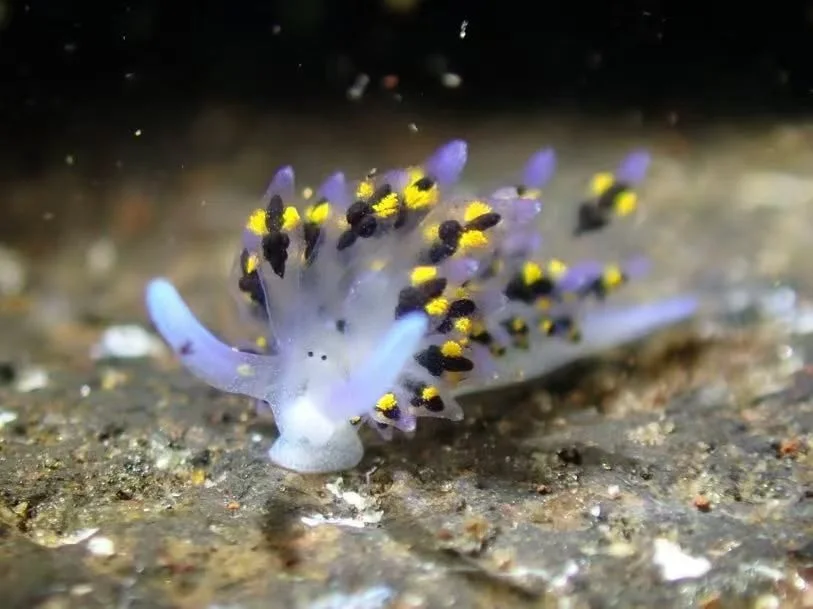
Nudibranchs, often called “sea slugs,” are among the most visually striking invertebrates in the ocean. Belonging to the subclass Opisthobranchia of the class Gastropoda, they are shell-less mollusks known for their vibrant colors and delicate forms. Their name “nudibranch” literally means “naked gills,” referring to the exposed feathery structures on their back used for respiration.
🔬Classification
📏Physical Features
🌊Habitat Info
⚠️Safety & Conservation
Identification Guide
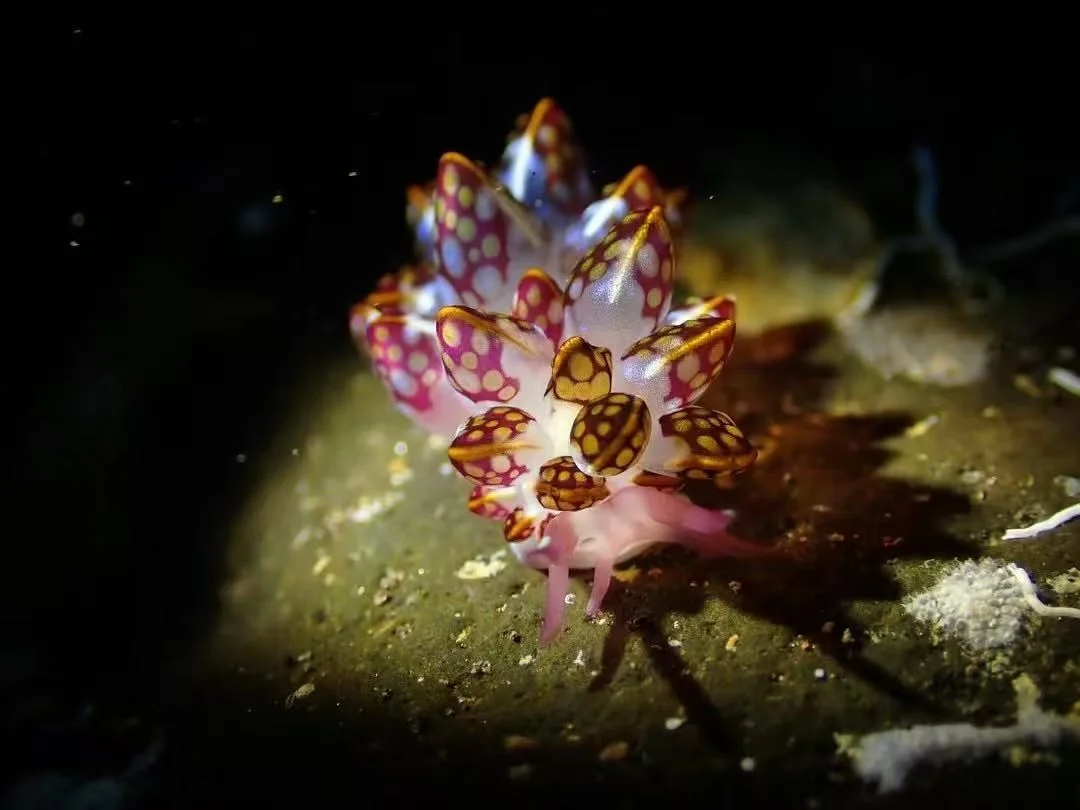
Nudibranchs display astonishing diversity in color, shape, and texture. Their vivid hues often serve as warning coloration to deter predators, signaling toxicity or unpleasant taste.
Key Identification Features
- Gills and Rhinophores: Most species have a crown of feathery gills near the tail and a pair of rhinophores (sensory tentacles) on the head for detecting chemical cues in the water.
- Body Shape: Some are smooth and elongated, while others have frilly edges or horn-like appendages.
- Color Patterns: Patterns can include dots, stripes, or marbling, and many species mimic the color of their prey, such as sponges or hydroids.
Common Lookalikes
Nudibranchs are sometimes confused with flatworms (Platyhelminthes), but flatworms are thinner, move with rippling edges, and lack rhinophores or external gills.
Juvenile vs. Adult
Juvenile nudibranchs are often semi-transparent and lack full coloration or appendage development. Their color intensifies as they mature and accumulate pigments or toxins from their diet.
Top 10 Fun Facts about Nudibranch
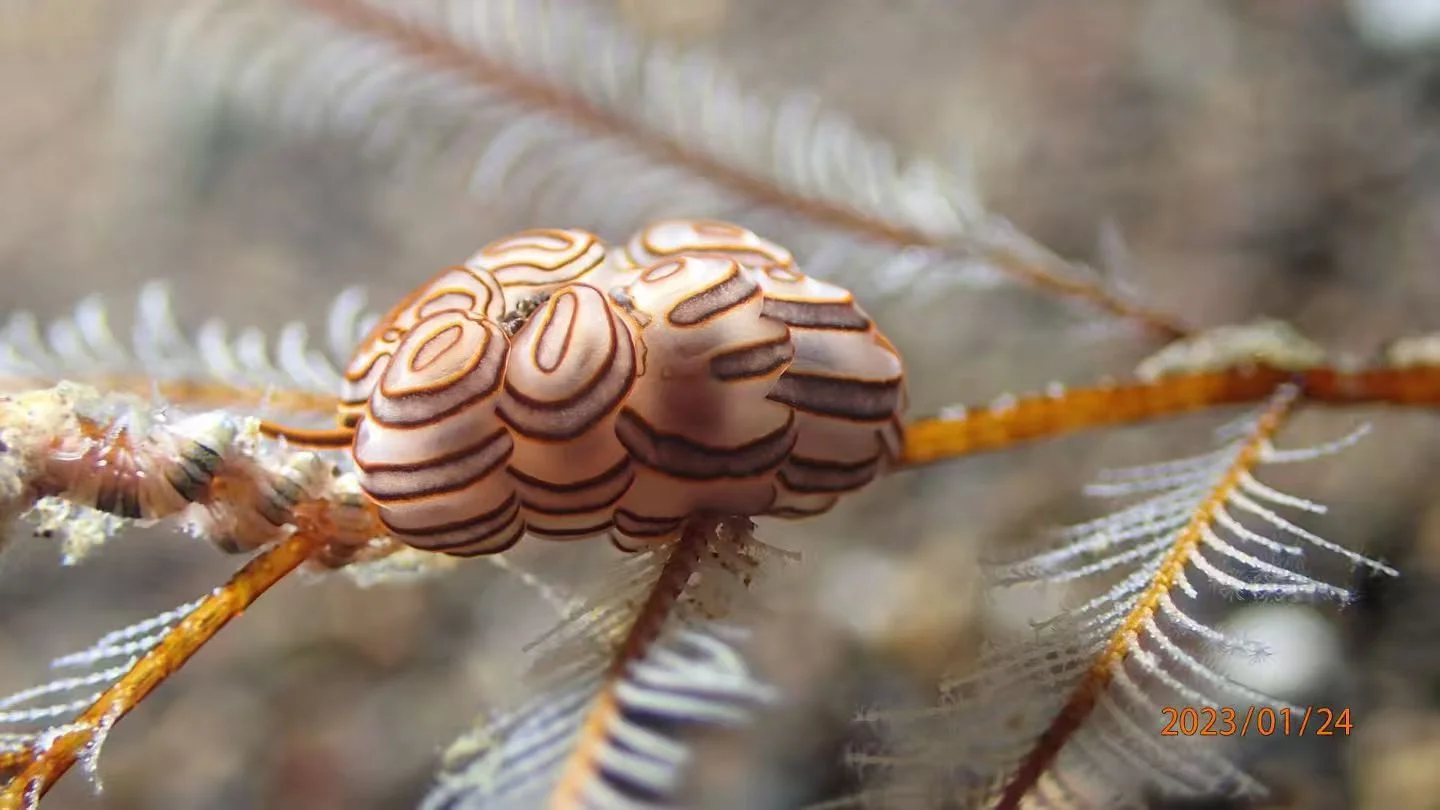
1. Masters of Color
Nudibranchs are among the most colorful creatures in the ocean, with each species displaying unique pigment combinations and patterns.
2. No Shell, No Problem
They lost their protective shell through evolution and instead developed chemical defenses and camouflage for survival.
3. They Steal Power from Prey
Some species, like Elysia chlorotica, can absorb chloroplasts from algae and perform photosynthesis — essentially “solar-powered” animals.
4. Toxic Beauty
Many nudibranchs store toxins from the sponges, hydroids, or sea anemones they eat, making them unpalatable to predators.
5. They Can Be Cannibals
Some species will prey on other nudibranchs, especially smaller or weaker individuals.
6. Hermaphroditic by Nature
All nudibranchs are simultaneous hermaphrodites, possessing both male and female organs. When two meet, they exchange sperm for mutual fertilization.
7. Short but Bright Life
Most nudibranchs live only a few weeks to a year, but they leave behind striking eggs spiraled like delicate ribbons.
8. Indicator of Reef Health
Because they rely on specific prey, their presence is often a sign of a healthy, biodiverse reef ecosystem.
9. Found Worldwide
From tropical reefs to cold waters like Norway and Alaska, nudibranchs inhabit oceans across all latitudes.
10. A Photographer’s Favorite
Due to their beauty and slow movement, nudibranchs are among the most photographed macro subjects in scuba diving.
Diving & Observation Notes
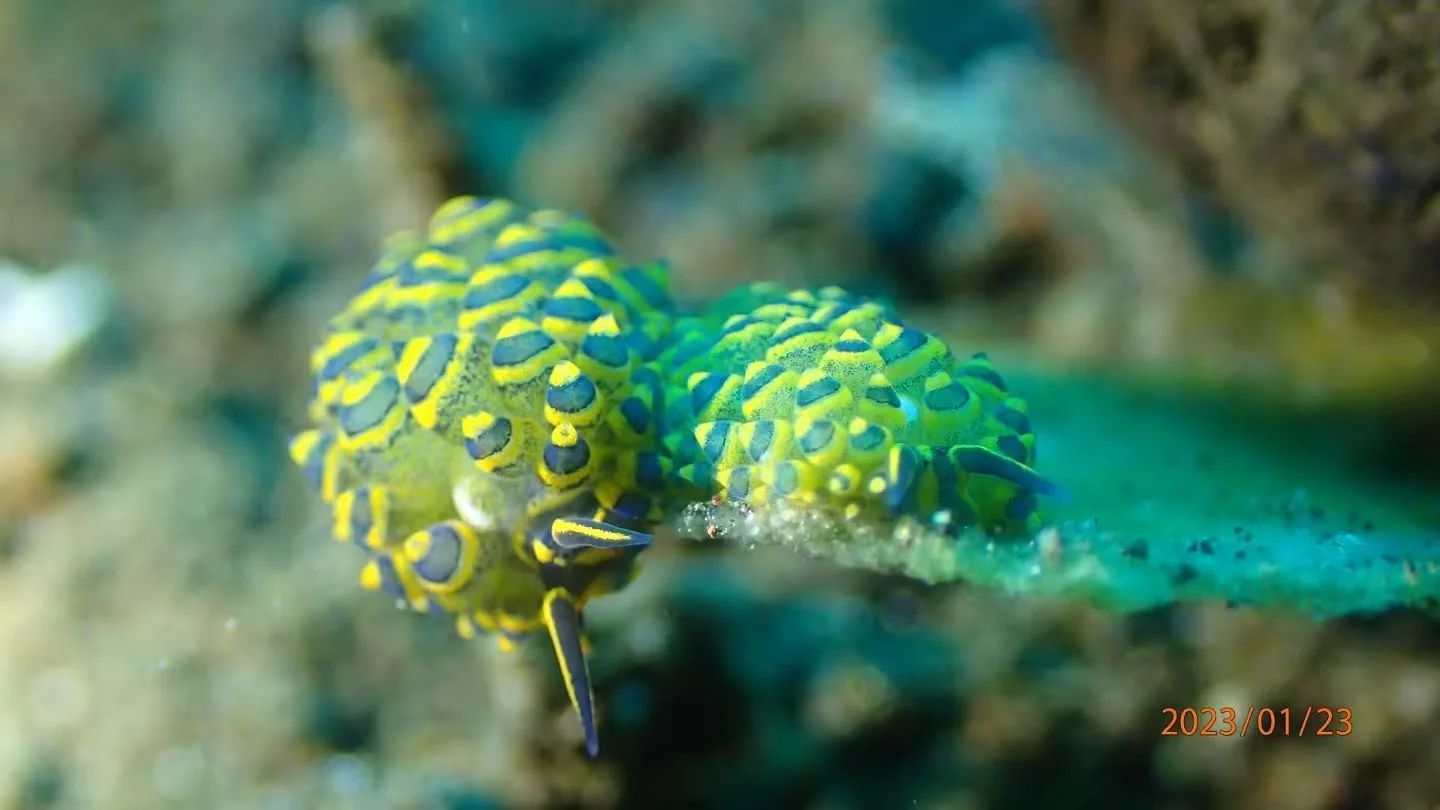
🧭 Best Observation Approach
Move slowly and keep your eyes near the reef or sand. Nudibranchs are small and often well-camouflaged. Maintain neutral buoyancy to avoid stirring sediment that can obscure your view.
📸 Photography Tips
- Lighting: Use soft, diffused light or a ring light to reveal subtle patterns and true colors.
- Angles: Low, eye-level angles help capture their rhinophores and texture.
- Composition: Include surrounding sponges or hydroids to show their natural habitat and feeding context.
- Macro Focus: A macro lens or wet diopter is essential for detailed close-ups.
⚠️ Safety & Behavior
- Do not touch or reposition nudibranchs for photos. Their skin is fragile and may contain toxins.
- Avoid damaging the coral or sponges they feed on.
- Follow “Look but don’t touch” ethics — respect the reef.
🌏 Local Dive Guide Insights
- Lembeh Strait (Indonesia): One of the world’s best macro diving spots, with hundreds of nudibranch species.
- Anilao (Philippines): Known for vibrant species diversity and colorful sponge habitats.
- Tulamben (Indonesia): Great for encountering rare species like Thecacera pacifica (“Pikachu Nudibranch”) or Hypselodoris bullockii.
Best Places to Dive with Nudibranch
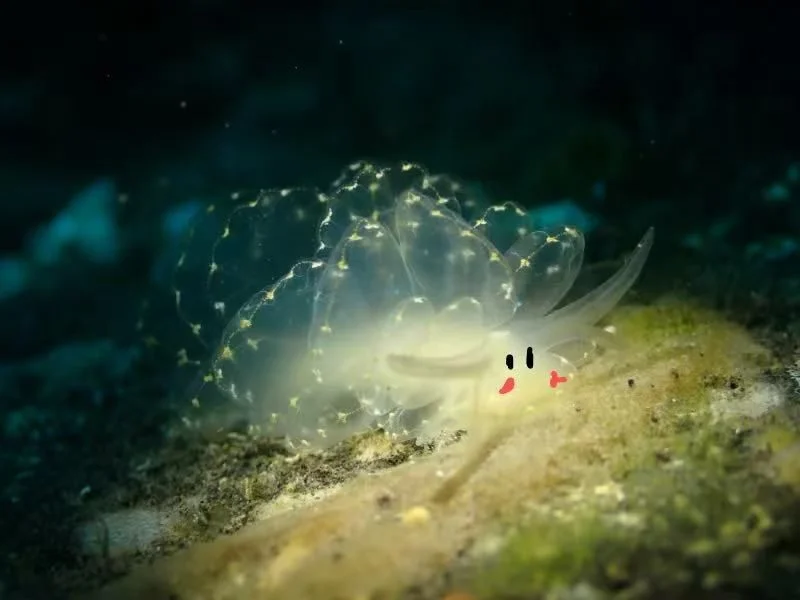
Tulamben(Bali)
Tulamben sits on Bali’s northeast coast and is best known for the USAT Liberty shipwreck – a 125‑metre cargo ship torpedoed in WWII that now lies just a short swim from shore. Warm water, mild currents and straightforward shore entries make diving here relaxed for all levels. Besides the wreck, divers can explore coral gardens, black‑sand muck sites and dramatic drop‑offs. Macro lovers will find nudibranchs, ghost pipefish, mimic octopus and pygmy seahorses, while big‑fish fans can encounter schooling jackfish, bumphead parrotfish and reef sharks. With a compact coastline packed with variety, Tulamben delivers world‑class wreck and critter diving without long boat rides.
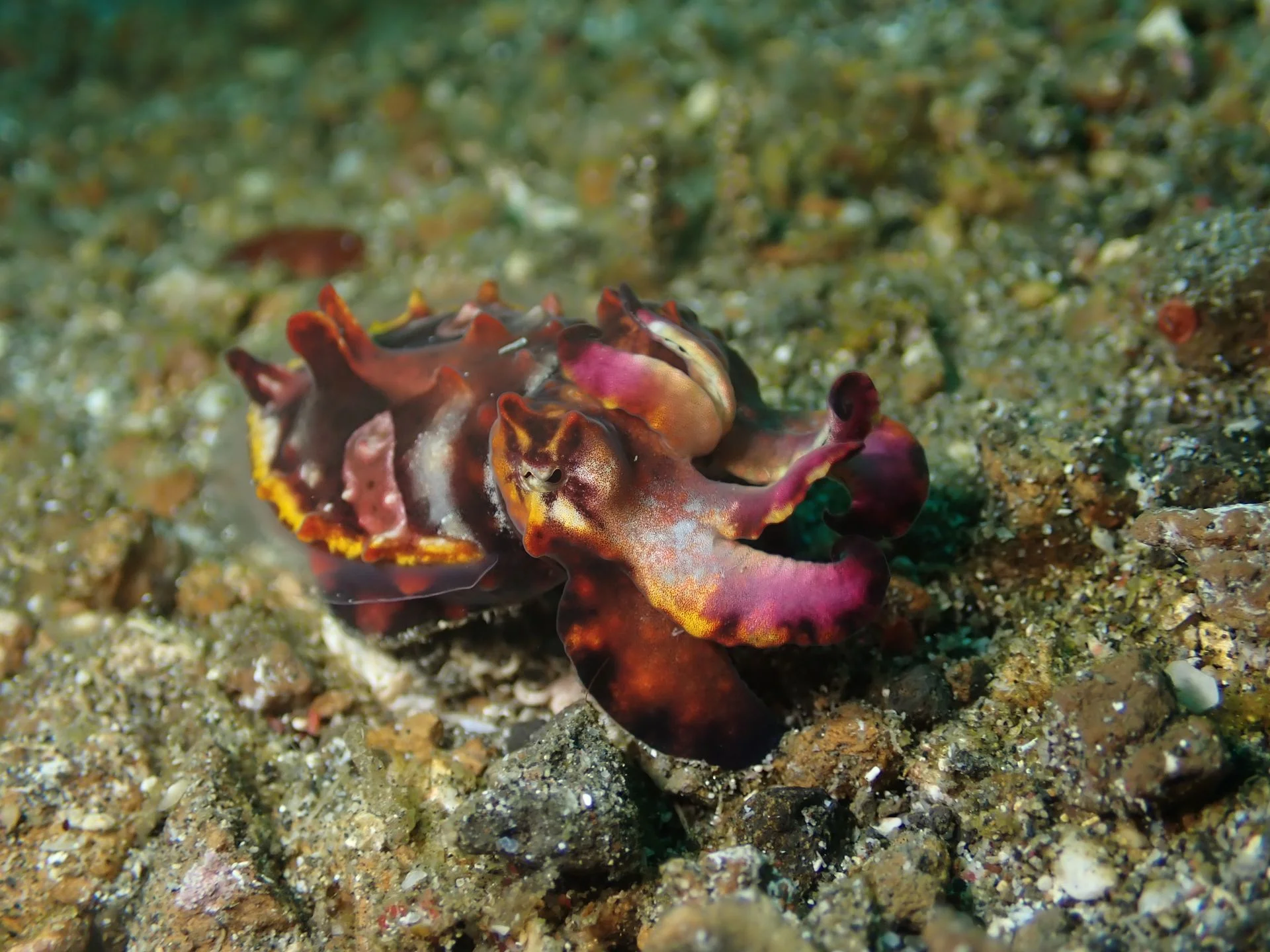
Lembeh
The Lembeh Strait in North Sulawesi has become famous as the muck‑diving capital of the world. At first glance its gently sloping seabed of black volcanic sand, rubble and discarded debris looks bleak. Look closer and it is teeming with weird and wonderful life: hairy and painted frogfish, flamboyant cuttlefish, mimic and blue‑ringed octopuses, ornate ghost pipefish, tiny seahorses, shrimp, crabs and a rainbow of nudibranchs. Most dives are shallow and calm with little current, making it an ideal playground for macro photographers. There are a few colourful reefs for a change of scenery, but Lembeh is all about searching the sand for critter treasures.
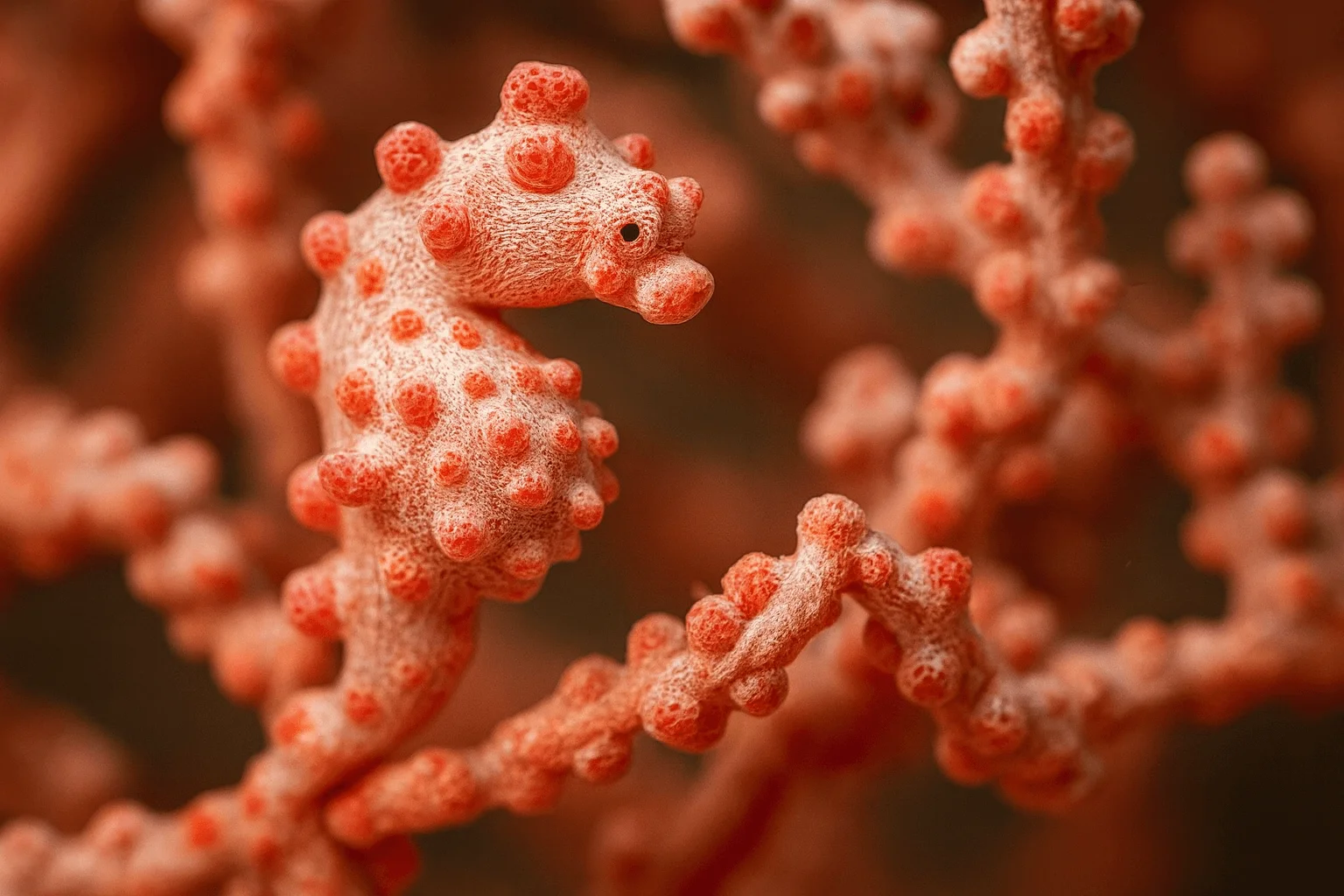
Anilao
Anilao, a small barangay in Batangas province just two hours south of Manila, is often called the macro capital of the Philippines. More than 50 dive sites fringe the coast and nearby islands, offering an intoxicating mix of coral‑covered pinnacles, muck slopes and blackwater encounters. Critter enthusiasts come for the legendary muck dives at Secret Bay and Anilao Pier, where mimic octopuses, blue‑ringed octopuses, wonderpus, seahorses, ghost pipefish, frogfish and dozens of nudibranch species lurk in the silt. Shallow reefs like Twin Rocks and Cathedral are covered in soft corals and teem with reef fish, while deeper sites such as Ligpo Island feature gorgonian‑covered walls and occasional drift. Because Anilao is so close to Manila and open year‑round, it’s the easiest place in the Philippines to squeeze in a quick diving getaway.
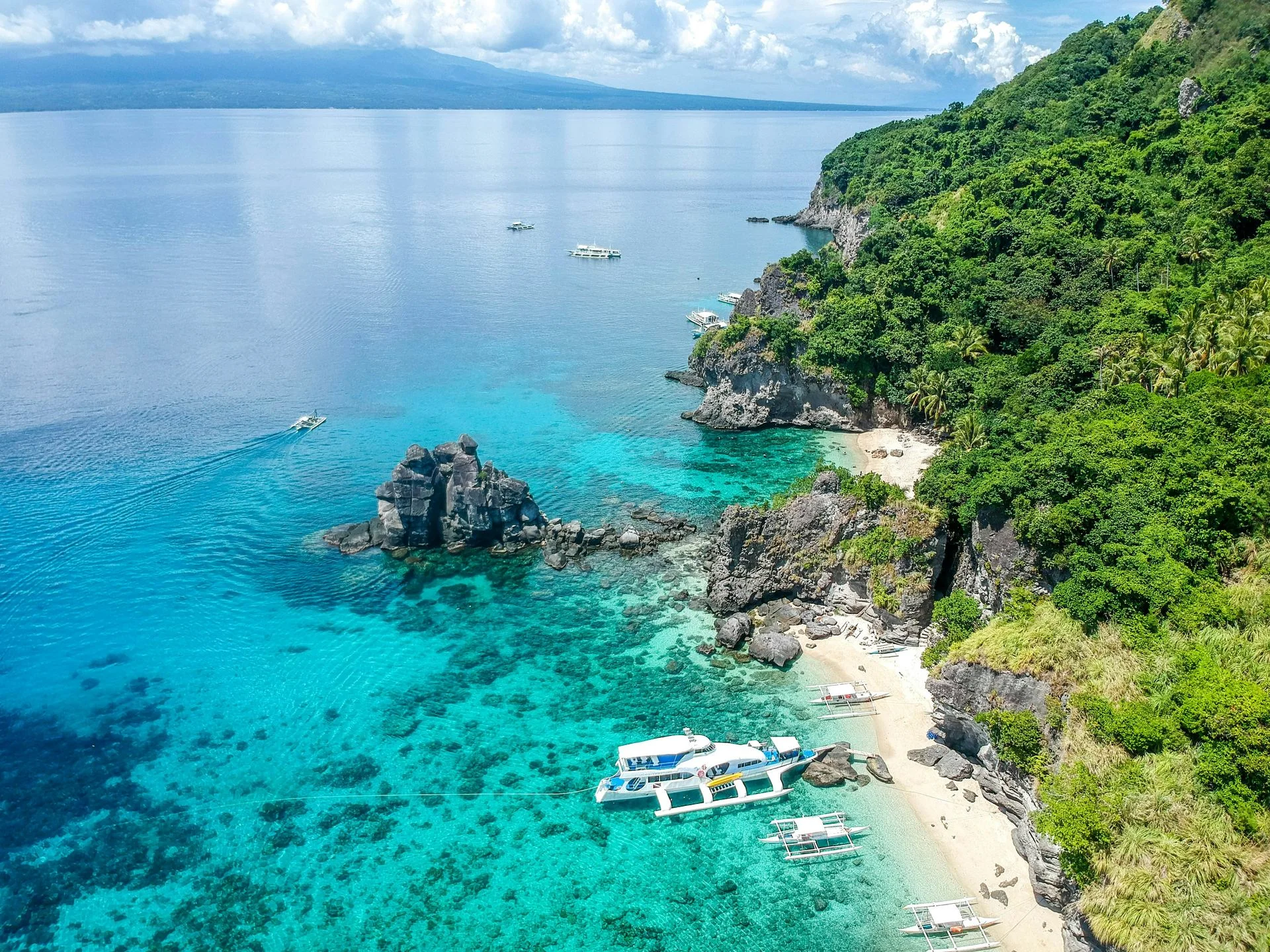
Dumaguete
Dumaguete on the southeast coast of Negros is the jumping‑off point for some of the Philippines’ most diverse diving. Along the nearby town of Dauin, a series of shallow marine sanctuaries and black‑sand slopes hide critters galore: frogfish, flamboyant cuttlefish, mimic octopus, ghost pipefish, seahorses, pipefish and nudibranchs. Artificial reefs made from car tyres and pyramids provide extra habitat. Offshore, Apo Island’s walls and plateaus burst with hard and soft corals, schooling jacks and barracudas, and friendly green turtles. With day trips to Oslob’s whale sharks or Bais’ dolphin‑watching, and excursions to nearby Siquijor, Dumaguete offers a perfect mix of macro muck diving and classic coral reefs.